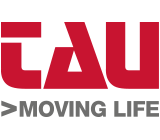Declaration of gate automation: some details
Gate automation: legislation regarding safety
When you want to automate a gate, it is good practice to contact a qualified installer: since 2005, new European directives EN 12445/12453 have come into effect, which govern the operation and safety standards of gate automation. Since that date, gates and their automation systems have been considered, to all effects, machines. Therefore, they are subject to all standards as if they were a single mechanical block. End users are often not aware of the fact that if these machines are installed incorrectly, they can cause serious harm as a result of crushing, trapping and much more.
–
Declaration of gate automation
By law, the firm that installs an automated system is required to issue a declaration of conformity for the system when installation has been completed. If the gate is a pre-existing one, the installer becomes, in all respects, the person responsible for it. As a result, the installer is obliged to check that the pre-existing gate is also in excellent condition. Therefore, once installation has been completed firms must carry out the tests prescribed by regulations, using the appropriate strength-measuring tool, and then provide the customer with a declaration of conformity independently and immediately.
–
What does it involve and how is it structured?
The declaration of conformity must, first of all, show the name and all the details of the person who compiles it, a protocol number for tracking, and the date on which it was written. It must also include all the details concerning automation, such as the model installed, serial number, location, type and dimensions of the system. In addition, the installer is required to compile and keep a technical file of the system accompanied by strength test results and a risks analysis, attaching a label with the CE mark to the certified system. All these regulations are required in order to guarantee that the installed machine cannot cause any type of damage, since it has been installed and built in the best possible way, and to identify the eventual person responsible if damage is caused by fortuitous events.
